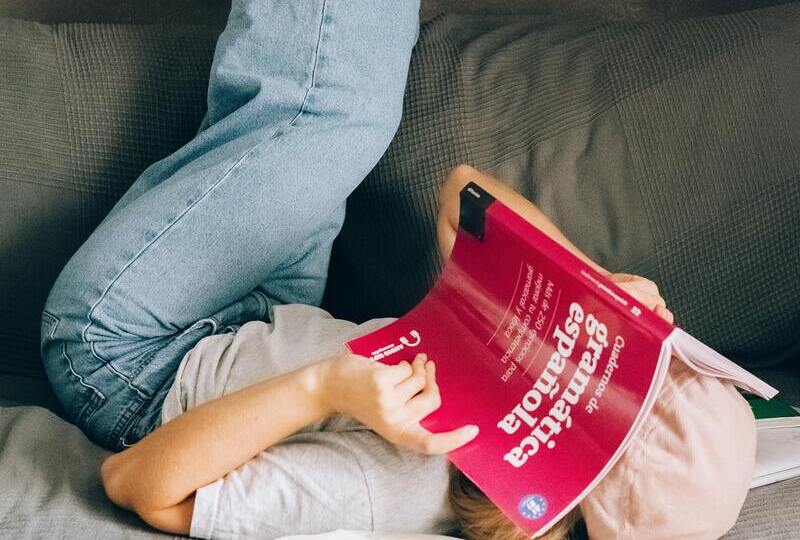How To Use Ser and Estar (To Be) In Spanish

Grammar rules are never easy for beginning Spanish language learners. Are you struggling with the difference between the Spanish verbs ser and estar? If Spanish grammar has been plaguing you, read on to master them!

Master This Fundamental of Spanish Grammar and Start Sounding Like a Native
It is possible that a sympathetic native speaker who is used to speaking with foreigners may understand Spanish with the occasional error. However, if you want your Spanish to stand out among the crowd, mastering these nuances of the language will go a long way! Mistaking ser and estar is a telltale sign of a novice learner, and as they say, the devil is in the details!
What Are Ser and Estar?
The Spanish verbs ser and estar can be tricky for new learners. The first problem my students face is that they don’t understand their own language to begin with. Analyzing your first language and becoming familiar with its parts provides insights that will help you master grammar in a second language. Both ser and estar mean “to be”. In English, we have one verb for this concept, while in Spanish there are two. Here is how we use “to be” in English.
-As a main verb when we want to describe a noun (person, place, thing, or idea)
I am a teacher.
-As an auxiliary verb to express time
I am teaching / was teaching / will be teaching / have been teaching / had been teaching
-In passive voice
I was taught.
-As a modal verb
I am to teach.

Conjugating Ser
In Spanish, there are two verbs that equate to the English “to be”. The first verb is ser. When I teach my students, I give them two charts. The first chart contains all the forms of the verb. There are six forms that correspond with the different pronouns used in Spanish. The form of the verb you use must correspond with the person you’re talking about. Selecting verbs and pronouns that go together is called conjugation. Spanish verb conjugation is very important to mastering grammar concepts going forward. Below is a chart of the pronouns and their translations in English, as well as a chart of the forms of the verb ser that go with each.
| Spanish | English |
|---|---|
| Yo | I |
| Tú | You (informal) |
| Él | He |
| Ella | She |
| Usted | You (formal) |
| Nosotros | We |
| Vosotros | You all (informal) |
| Ellos | They (men and mixed groups) |
| Ellas | They (women only) |
| Ustedes | You all (formal) |
Nosotros and vosotros also have female forms used for groups of only women (Nosotras and vosotras). The masculine versions should be used for any group that involves at least one man.
SER
| Pronoun | Verb | Pronoun | Verb |
|---|---|---|---|
| Yo | soy | Nosotros | somos |
| Tú | eres | Vosotros | sois |
| Él / Ella / Usted | es | Ellos / Ellas / Ustedes | son |
Based on the two charts above, if you wanted to say he is, you would use él es. If you wanted to say I am, you would say yo soy. Conjugating the verb ser can be tricky because it is an irregular verb. It may take a little studying and memorization, as with any topic when learning Spanish!

Conjugating Estar
The second way to say “to be” in Spanish is estar. Below is a table with the conjugations for the verb estar.
ESTAR
| Pronoun | Verb | Pronoun | Verb |
|---|---|---|---|
| Yo | estoy | Nosotros | estamos |
| Tú | estás | Vosotros | estáis |
| Él / Ella / Usted | está | Ellos / Ellas / Ustedes | están |
Using this chart, you can see that if you wanted to say we are, you would use nosotros estamos. If you needed to say they are, you could say ellos están. I’m often asked whether the accents are necessary or not. While a native speaker will likely understand with the context of conversation, correct spelling in Spanish includes appropriately accented words.

When To Use Ser and Estar
Now that you know that Spanish has two ways to say “to be” (ser and estar) and you’ve seen the verb conjugations for each pronoun, you need to decide when to use ser and when to use estar. Differentiating between ser and estar can be difficult at first. As time goes on and you become more familiar with the language, you’ll develop a sense of correct and incorrect usage of the two verbs. Until then, however, there are two ways to tell whether you should opt for ser or estar.

Permanent vs. Temporary To Tell the Difference Between Ser and Estar
The verb ser tends to be more permanent while the verb estar is often more temporary. This is not a hard and fast rule. It does have its exceptions, but in a pinch, it can often lead to selecting the correct verb. Let’s look at a few examples of ser and estar:
SER
Yo soy una mujer. (I am a woman.)
Tú eres alto. (You are tall.)
Él es medico. (He is a doctor.)
ESTAR
Yo estoy cansada. (I am tired.)
Tú estás ocupado. (You are busy.)
Él está pensando. (He is thinking.)
If you look at the examples for ser, you will notice that they are descriptions of more permanent descriptions of people. Being male, female, tall, or short are often more permanent traits. One’s profession is also typically stable and unchanging. Though it is possible to change some of these things, they’re more stable. This is especially true when one considers that estar is used for being tired, busy, or thinking. These descriptions are more fleeting or temporary.

Doctor and Place To Tell the Difference Between Ser and Estar
Another way to differentiate between ser and estar is to use the acronyms DOCTOR for ser and PLACE for estar. Below, you will find charts for both acronyms with examples of their uses.
| Letter | Meaning | Example |
|---|---|---|
| D | Date | Es lunes. (It is Monday.) |
| O | Occupation | Ella es abogada. (She is a lawyer.) |
| C | Characteristics | Nosotros somos inteligentes. (We are smart.) |
| T | Time | Son las 10:00. (It is 10:00.) |
| O | Origin | Usted es de Peru. (You are from Peru.) |
| R | Relationships | Tú eres mi amigo. (You are my friend.) |
| Letter | Meaning | Example |
|---|---|---|
| P | Position | El libro está encima de la mesa. (The book is on top of the table.) |
| L | Location | Ella está en la clase. (She is in class.) |
| A | Action | Nosotros estamos hablando. (We are speaking.) |
| C | Condition | Ellos están enfermos. (They are sick.) |
| E | Emotion | Usted está feliz. (You are happy.) |
Take a moment to look at the examples. Notice that most of the ser examples in the DOCTOR chart, with the exception of time and date, have to do with more permanent descriptions and the examples in the PLACE are more temporary situations.
There is one other use of ser that is not covered in the chart above. While location uses estar, the location of an event uses ser. When you want to say that a party, concert, meeting, or other event is taking place in a location, you’ll use ser. For example, La reunión es en la sala a la derecha would mean The meeting is in the room on the right.

Other Spanish Grammar Considerations
One last thing to keep in mind when differentiating between ser or estar is that the meaning of a sentence can change based on which verb you use. The example I like to give my students is Estoy aburrido and Soy aburrido. The first means I am bored. It’s a temporary condition, as you will see on the PLACE chart. The second means I am boring. It’s a characteristic, as you will see on the DOCTOR chart. Here are a few more examples of ser and estar to consider:
-Soy feliz. - I am happy. (I am a generally happy person.)
-Estoy feliz. - I am happy. (Today, I feel happy. Who knows what will happen tomorrow!)
-Eres guapo. - You are handsome. (You were born with nice features.)
-Estás guapo. - You look handsome. (You picked out a nice suit and look handsome, for now!)

Now Go Out and Practice
Deciding whether to use ser or estar is one of the first battles a student will face when learning Spanish. If you use the tips I’ve laid out here, you’re likely to select the correct verb most of the time. Of course, you’ll make mistakes and learn from them along the way. The best way to solidify your knowledge of these grammar rules is to put them into practice and speak the language. Whether it's with Speechling or at your local bodega, Spanish language learning is about making connections and communicating, so get out there and give it a try!